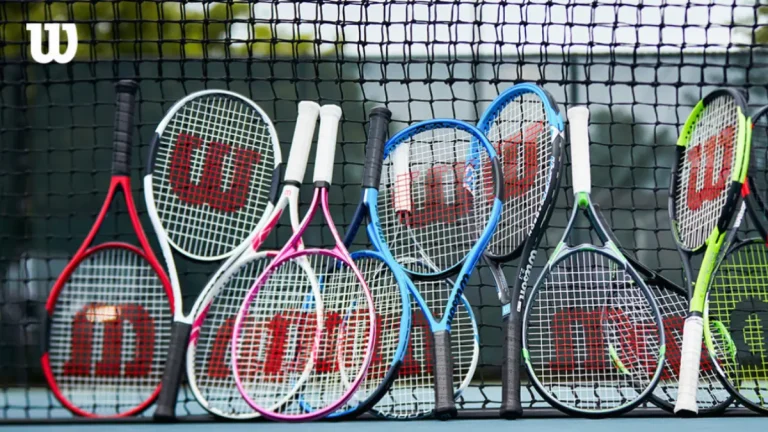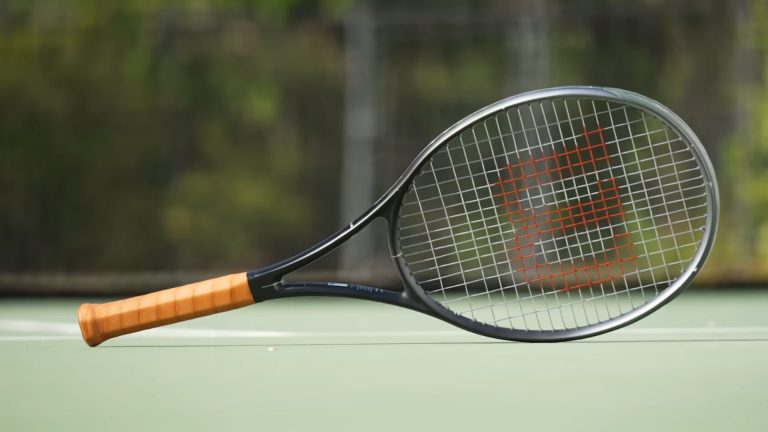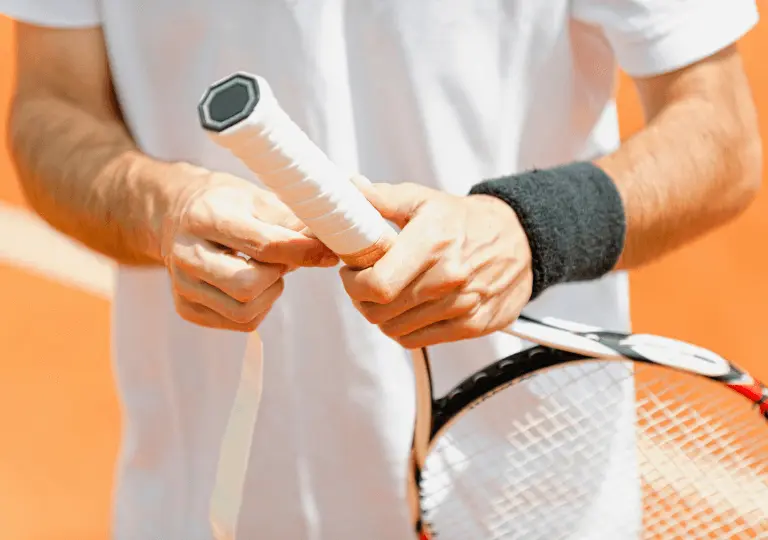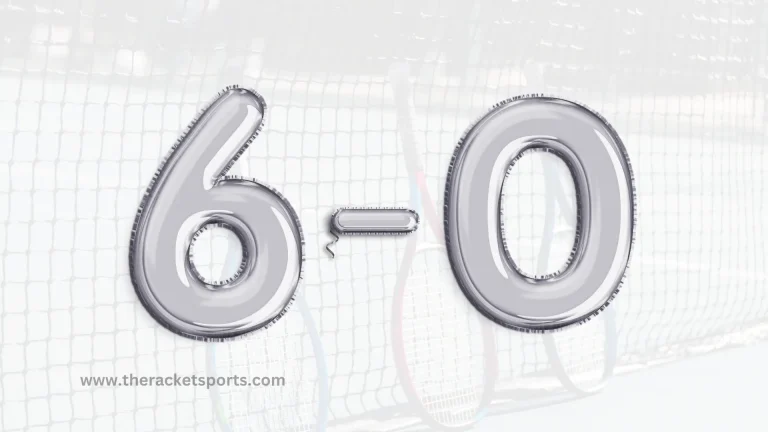Tennis Rules- Learn How to Play Before You Start Your First Game
Whether you are watching the game through your television screens or you are enthusiastic about learning more about the sport, you should know tennis rules to understand and play tennis better. From scoring, equipment, and serving rules to the code of conduct, the rules of tennis cover a wide range of aspects.
Tennis is a sport enjoyed and played by people around the world. Like other sports, tennis also has a set of rules that supervise the game. These rules are planned to make sure that there is fair play, better understanding, and a clear structure for competition. Understanding the rules of tennis is important for players, officials, and spectators, as it provides the framework for the game and helps maintain the integrity of the sport.

These rules contribute to smooth and enjoyable play. Whether you’re a beginner learning the basics or a seasoned player looking to polish your skills, a solid understanding of the rules is essential to appreciate the game of tennis fully.
Key Factors Of Tennis Rules For Beginners
Tennis is played on a court that is rectangular in design and can have a variety of surfaces. The game consists of two-player singles matches or four-player doubles matches. Players stand on the opposing sides of the net, where they strike the ball to each other with a tennis racquet. Once the ball is struck by an opponent, player, or team each player or team has a max of a single bounce to throw the ball over the net and within the court’s limits.
The opponent scores a point when a player fails to put the ball back in the appropriate court.
Tennis Equipment:
Rackets:
The tennis racket is a player’s primary tool, and its design has evolved over the years for optimal performance. Modern rackets are typically made of lightweight materials such as graphite or carbon fibre, offering a balance of power and control. The frame size and string tension can vary based on player preference.
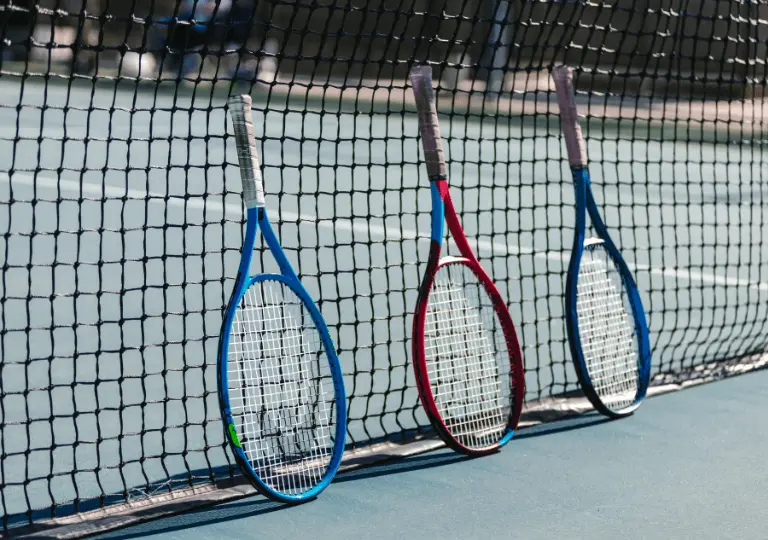
Tennis Balls:
Tennis balls are standardised and must meet distinct standards in terms of size, bounce, and weight. They are typically made of a hollow rubber core covered in felt. The International Tennis Federation (ITF) controls the specifications of balls used in tennis to guarantee consistency in play.
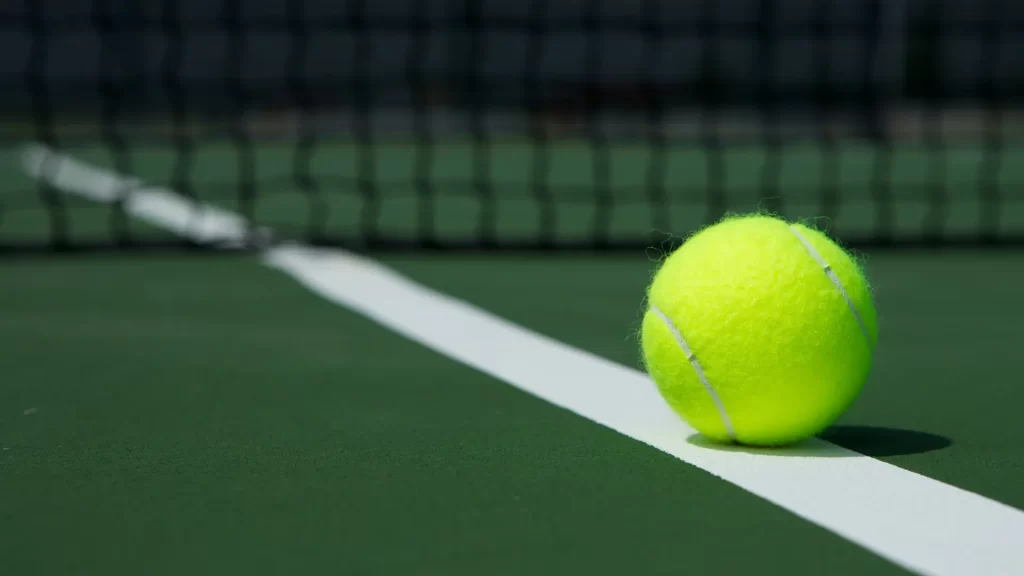
Court Surface:
Tennis can be played on different court surfaces. Each surface has its distinctive features. Common surfaces include clay, grass, hardcourt, and carpet. The surface type can significantly impact the game, affecting ball speed and bounce.

Tennis serves and rules
The umpire tosses a coin to start a tennis match. The person who wins the toss gets to select whether they wish to serve, receive, or start the match on their chosen side.

Service Boxes and Baseline:
Serving is done from behind the baseline, with the objective of trying to get the ball into the service box across the net that is diagonally opposite.
Alternating Sides:
Players take turns serving, and the server rotates sides after each point. In doubles, each team member also alternates serving.
Let Rule:
A serve that ends with the ball striking the net but landing in the appropriate service box is referred to as a “let.” The server earns another chance to serve without having to worry about getting any penalty.
Faults and Double Faults:
A fault happens when the server ceases to land the tennis ball within the opponent’s service box. Two straight faults result in a double fault, leading to a point’s loss.
Second Serve:
After a fault, the server gets a second chance to serve. The second serve is crucial, as one more fault costs you another point loss. Players often adjust their strategy for the second serve, going for more accuracy over power.
Foot Faults:
A foot fault is declared when the foot of the server passes over the baseline or centre mark before coming in touch with the ball. Foot faults result in the loss of the serve.
Ace:
A serve that the server successfully makes counts as legal and wins the point if the other player is unable to return the ball, which is called an ace.
Point scoring in Tennis
In tennis, points are given out according to a special scoring system that considers the result of each game, set, and match.
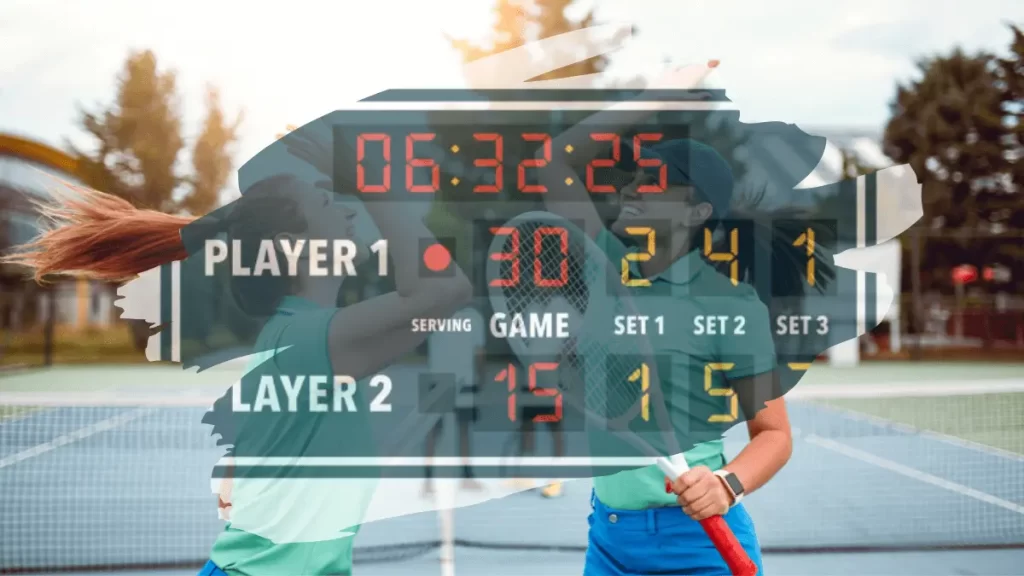
Scoring system: Points in a game
The primary division of scoring in tennis is the point. A player earns points in increments of 15, starting from zero. The sequence is as follows:
- Love: 0 points
- 15: 1 point
- 30: 2 points
- 40: 4 points
A player wins the game when they win the following point after reaching 40. However, if the score is 40-40, that is a tie, it is announced as a “deuce.”
Deuce and Advantage:
When the score is a tie, for instance, 40-40, it’s directed to a deuce. To win a game, a player is required to score at least 2 points straight from the deuce.
The player who scores the first point following a deuce is said to have an “advantage”.
The one with leading points wins the game. The score goes back to deuce if your opponent scores the next point.
Games and Sets:
Winning a Game:
- A player is required to score and win 4 points if they wish to win the game.
- A player is required to win 6 games if they wish to win a set. With an advantage of two or more than two games over the opponent, for example, a set could end with a score of 6-4 or 7-5.
Tiebreaker:
In situations where a set ends in a 6-6 or 12-12 tie, a tiebreaker is frequently used to determine the winner. The very first player to gain 7 points having a distinction of at least two points successes in both the set and the tiebreaker.
Match of Three Sets
In many tennis tournaments and matches, particularly at the professional level and for women’s matches, the format is best-of-three sets. This means the first player or team to win two sets emerges victorious.
Winning Sets:
At least six games are played in each set, with a two-game advantage over the opposition. If the set finalises with a 6-6, a tiebreaker is used to determine the winner of the set.
The match is declared won by the individual or team that wins two sets in a row.
Match of Five Sets:
In major Grand Slam tournaments and for men’s matches in many professional events, the format is best-of-five sets. This means the first player or team to win three sets secures the match.
Winning Sets:
Equal to a best-of-three arrangement, every set includes at least six games, having a two-game edge on the opponent team. If the set reaches a 6-6 tie, a tiebreaker may be played, although the rules for final set tiebreakers can vary (e.g., reaching a certain score, such as 12-12, before a tiebreaker is initiated).
The winner of the match is the player or team that wins three sets in a row.
Final Set Tiebreak (in Some Tournaments):
In some tournaments, including Wimbledon, a final set tiebreak is used if the score in the final set reaches a certain point (e.g., 12-12 in a men’s match). The first player to achieve a specified number of points comes out first, winning the final set and the match.
Tennis Shots:

Forehand:
The forehand is a fundamental tennis stroke in which the player uses their dominant hand to swing the racket across their body. They strike the ball on the same side as the playing hand. It’s a powerful shot used for both offensive and defensive play.
Backhand:
When a player uses their backhand, they strike the ball with their dominant hand on the other side of their body. Backhands can be one-handed or two-handed, each with its advantages and disadvantages.
Volley:
A volleyball shot occurs when a player hits the ball, and it returns to their side of the court before it bounces elsewhere. They are often performed near the net and need quick reflexes and accurate timing.
Lob:
The lob is a shot that is frequently used to get away from an advancing net player. The ball should be hit high enough into the opponent’s court.
Drop Shot:
A player who performs a drop shot carefully taps the ball over the net. In the opponent’s half, the ball lands near the net. It is the shot that catches the opponent off guard.
Smash:
The smash is a powerful shot played when the ball is high in the air, often as a result of a lob from the opponent. Players use an overhead motion to strike the ball aggressively downward into the opponent’s court.
Conduct and Code Violations:
Code of Conduct:
It is expected of players to follow a code of conduct that upholds the dignity of the game, referees, and rival teams.
Code Violations:
Violations, such as racket abuse, verbal abuse, and time violations, can end in receiving penalties, point deductions, or even disqualification from the match.
Conclusion
Tennis is a skill-based, strategy-based, and physically demanding sport. From the equipment used to the rules governing serves, scoring, and shots, a thorough understanding is important for both players and spectators.
Whether you’re a beginner learning the basics or a fan wanting to enhance and improve your knowledge and appreciation for the game, learning tennis rules is a must. You will have a detailed knowledge of tennis rules and strategies from this guide. You definitely will have a better time playing tennis if you are aware of these regulations.
FAQs
How many sets are needed for a player to win a tennis match?
Tennis is played commonly in points, games, sets, and matches. You need 4 points to win a game, 6 games are needed to win a set and 2-3 or 3-5 sets to win a match.
How do games start in tennis?
Tennis begins by tossing a coin. Whichever player wins the toss gets to make the first serve.
What is Love in tennis?
A ‘love’ means zero points in tennis. No score in points, games, and sets is denoted by 30-0 and is usually given as 30 love.


